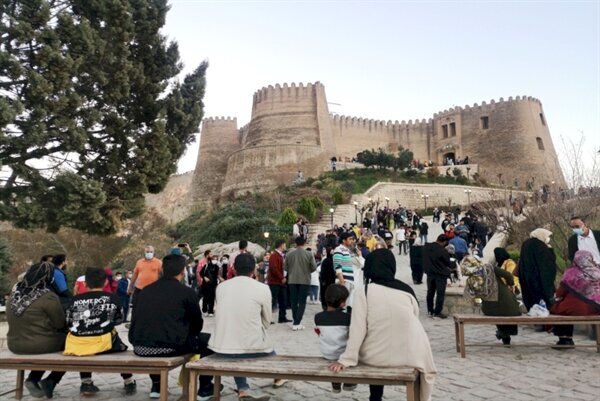Lorestan’s Sassanid-era fortress draws thousands of travelers

TEHRAN – The centuries-old Falak-ol-Aflak Fortress in Khorramabad, was the most visited monument in the western province of Lorestan during the two-week New Year (Noruz) holidays (March 21-April 2).
While over 1.6 million Noruz trippers visited the historical sites and natural sights across the province, 190,967 people visited Falak-ol-Aflak Castle during the mentioned period, making it the top most visited attraction in the province, the provincial tourism chief has said.
After Falak al-Aflak Castle, Lake Keeyow attracted the most visitors during the time noted, Seyyed Amin Qasemi explained on Wednesday.
The unmissable eight-towered Falak-ol-Aflak Castle dominates the city as one of the most visited travel destinations in the region for both domestic and foreign sightseers.
The fortress dates from the Sassanid era (224–651). It seems particularly imposing and dramatic when floodlit at night, offering picturesque views of its encircling crenelated battlements.
The Sassanid era is of very high importance in Iranian history, under which Persian art and architecture experienced a general renaissance.
Soaked in history and culture, Lorestan is one of the lesser-known travel destinations in Iran, which mainly acts as a gateway to the sweltering plains below in adjoining Khuzestan province. Lorestan is also a region of raw beauty that an avid nature lover could spend weeks exploring.
The region was inhabited by Iranian Indo-European peoples, including the Medes, c. 1000 BC. Cimmerians and Scythians intermittently ruled the region from about 700 to 625 BC.
Lorestan was incorporated into the growing Achaemenid Empire in about 540 BC and successively was part of the Seleucid, Parthian, and Sassanid dynasties.
ABU/MG
